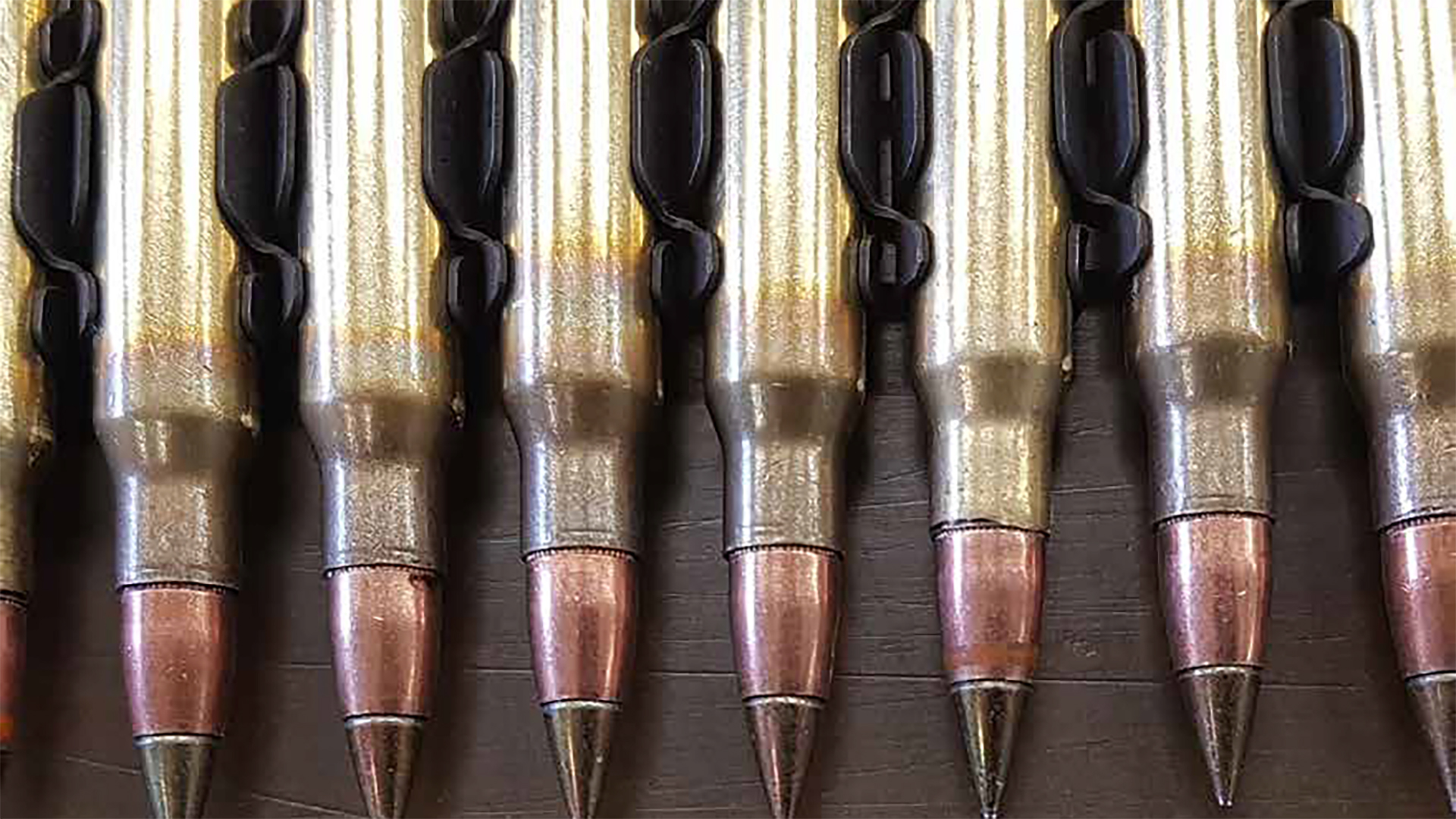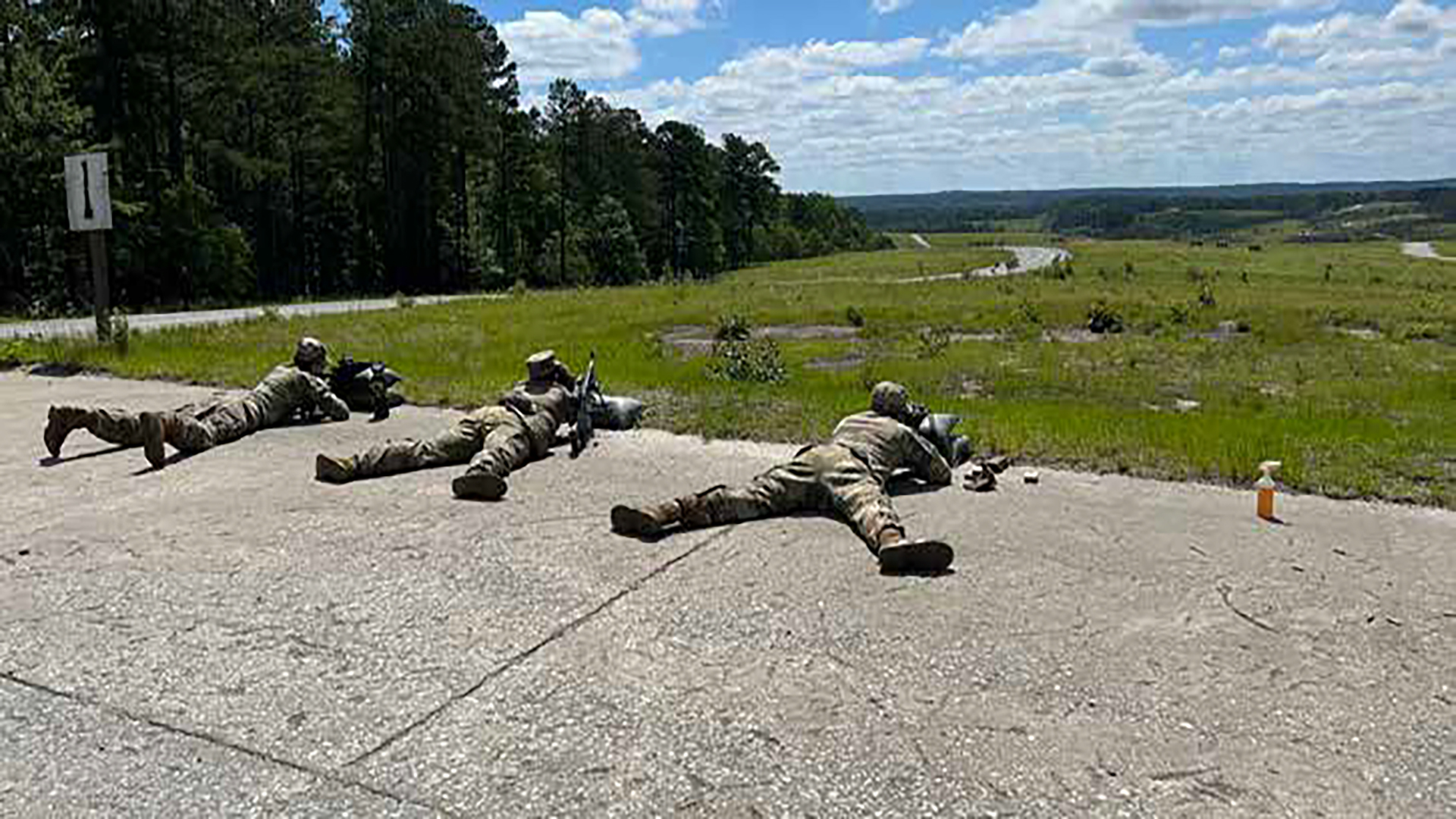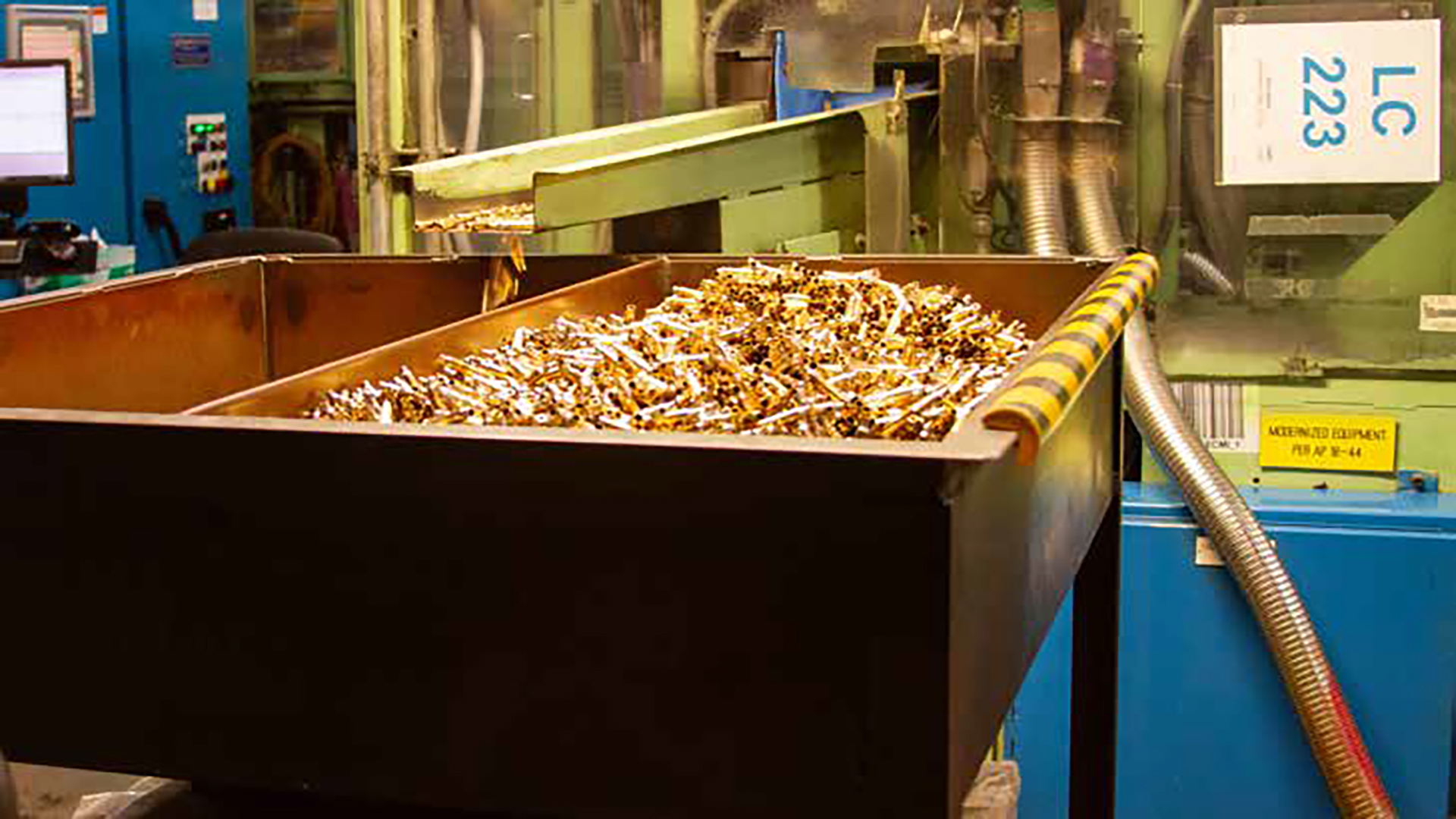Tapping Global Expertise
By Maj. Faith M. Mueller
Article published on: April 1st, 2025, in the Spring 2025 Issue of Army AL-T
Read Time: < 4 mins

Innovation at the round starts with our diverse partnerships around the globe.
The efforts to bring the best technology to the warfighter not only start at our Army research institutes but reach outside our borders to experts across the world. International industry partners play a crucial role in advancing technology through the Engineering and Manufacturing Development (EMD) phase; however, we still face logistical and communication challenges when it comes to collaborating to further develop capabilities for warfighters.
Advancing Small Caliber Ammunition
For recent small caliber ammunition developments, such as One-Way Luminescence (OWL), international collaboration allowed the government technical community at the U.S. Army Combat Capabilities Development Command Armaments Center (DEVCOM-AC) to enhance capabilities to bring to the warfighter. Small arms ammunition is typically linked with tracer rounds that allow the shooter to see the trajectory of the ball rounds being fired. Product Manager for Small Caliber Ammunition (PdM SCA) under the Joint Program Executive Office for Armaments and Ammunition, along with our partners at DEVCOM-AC, began the OWL program to overcome key challenges on 5.56 mm and 7.62 mm legacy tracer ammunition.
Legacy tracer brightness and muzzle flash hindered warfighter survivability, moreover, the mismatch to the ball round link impeded adjustments during fire and poor lethality performance in comparison to the ball round the tracer is linked with.
To the counter, the OWL program aimed to achieve visibility to the friendly shooter at relevant distances, ballistic match to the ball ammunition it is linked with and similar terminal lethal effects to enhanced performance round ammunition. These goals are clear, but achieving the precise chemical mixture and manufacturing process to bring these requirements into production reality through the EMD phase proved to be a larger challenge than any one country could overcome alone.
Achieving the right ignition timing, color and intensity in the tiny cavity at the back end of a bullet in a producible design that is similar in cost to a legacy tracer, is a very hard challenge to overcome. Furthermore, the success of this program is being rapidly integrated into the new 6.8 mm Next Generation Squad Weapon ammunition. Tackling the task of implementing a newly developed process into the Next Generation ammunition quickly isn’t an easy feat.
Partner Across Borders
For the OWL program, collaboration with the international community accelerated innovation and provided access to new technologies not located in the U.S. The global pool modernization and innovation has benefited the U.S. government by investing and adopting cutting-edge manufacturing processes for tracers that were available in Sweden. General Dynamics (GD) Ordnance and Tactical Systems-Canada and Nordic Ammunition Company (Nammo), both competed with 7.62 mm OWL prototypes, creating prototype laboratories that enable quick adjustments to the OWL mix. Once adjustments were made, the companies could quickly manufacture and test prototypes on limited ballistics and OWL performance. Uniquely, at Nammo’s prototype laboratory in Sweden, manufacturing and testing is all on one site allowing for flexibility and quick turns critical to the EMD phase. Leveraging competition and the iterative prototyping, PdM SCA and DEVCOM-AC established flexibility in determining the optimal OWL mix within the tracer cavity accompanied by a quick turn on testing and data exchange.
Nammo has subsidiaries in the U.S., that allows for smoother communication across international boundaries. While that adds a layer of communication, the benefits of knowledge management and engagement are heightened. Nammo brought additional cutting-edge technologies and manufacturing processes to the table that are now being incorporated into future facility designs at Lake City Army Ammunition Plant (LCAAP). Nammo was receptive to data and technical machining adjustments needed to fit the landscape of manufacturing at LCAAP established by the strong relationship built by PdM SCA and DEVCOM-AC.
In collaboration with LCAAP, PdM SCA and DEVCOM-AC took lessons learned and tactics from both GD-Canada and Nammo and incorporated them into manufacturing capabilities at LCAAP.
The Art Of exchange: Navigating Challenges
Key challenges faced in international contracting and collaboration are most often felt through intellectual property and communication barriers. The technology in small-caliber ammunition may be sensitive in nature to protect our intellectual property from being seen by our adversaries. Establishing clear contracts and agreements that outline intellectual property ownership and licensing protection mitigates most intellectual property challenges. Another vehicle to help protect sensitive information when collaborating abroad has been through using non-disclosure agreements (NDAs). NDAs enable deeper conversations with international industry, mitigating some of the challenges to keep industry and U.S. government information safeguarded.

Shaping The Future
U.S. Army Soldiers conduct a Limited User Assessment for OWL in May 2024. This event was led by the Maneuver Battle Lab, Maneuver Capabilities Development and Integration Directorate. Soldiers provided key feedback on OWL tracer technology versus legacy tracers. Over two weeks Soldiers executed zeroing, qualification tables and a collective live-fire event. (Photo by the author, JPEO A&A)
Breaking the barrier of communications is critical as international partnerships are developed. Written agreements and contracts initially overcame these barriers, followed by regular integrated product team meetings and quarterly visits to industry by both DEVCOM-AC and PdM SCA. Establishing a clear project management structure both stateside and internationally provided clear and concise scheduling, leading to project completion within schedule.
Time zones also created a unique problem that was quickly overcome with regular communication and consistent feedback from both industry and the U.S. government, aligning both partners to promptly address any conscerns.
Further combating the logistical challenges of shipping to and from international partners brings another unique and timely task. Each industry partner and nation, including the U.S., has policies that dictate how materiel is transported, creating a long lead time. For instance, not until the team started closing out the contract did they realize remaining unused projectiles would have to be shipped by Nammo back to the U.S. This extended the period of performance by six months to simply ship the projectiles back with the proper documentation on both the U.S. and Swedish sides for export and import.

Pot of Gold
A peek into the factory at LCAAP in Missouri where Nammo has overseen facility designs. (Photo by Christine Paul, U.S. Army Corps of Engineers)
Conclusion
International partners are vital for development and production of cuttingedge, small-caliber ammunition. The strength of design and innovation stems from diverse expertise across the globe. This international partnership has been visible in the relationships built and grown through the OWL program. These programs recently entered Low-Rate Initial Production, and that would not have been possible without international partnerships. PdM SCA will continue to engage the global industry to leverage expertise and production that will bring the best capability for the warfighter and continue to grow the arsenal of democracy.
For more information, go to the PdM SCA webpage at https://jpeoaa.army.mil/Project-Offices/PM-MAS/Teams/PdMSmall-Caliber
Author
MAJ. Faith M. Mueller is the project officer for OWL Programs and 6.8 mm facilities, serving as an assistant program manager for Project Manager Maneuver Ammunition Systems, assigned to JPEO A&A at Picatinny Arsenal, New Jersey. She holds an MBA from West Virginia University and an M.S. in environmental management from Webster University. She served as a chemical officer for 10 years before joining the Army Acquisition Workforce in 2022.